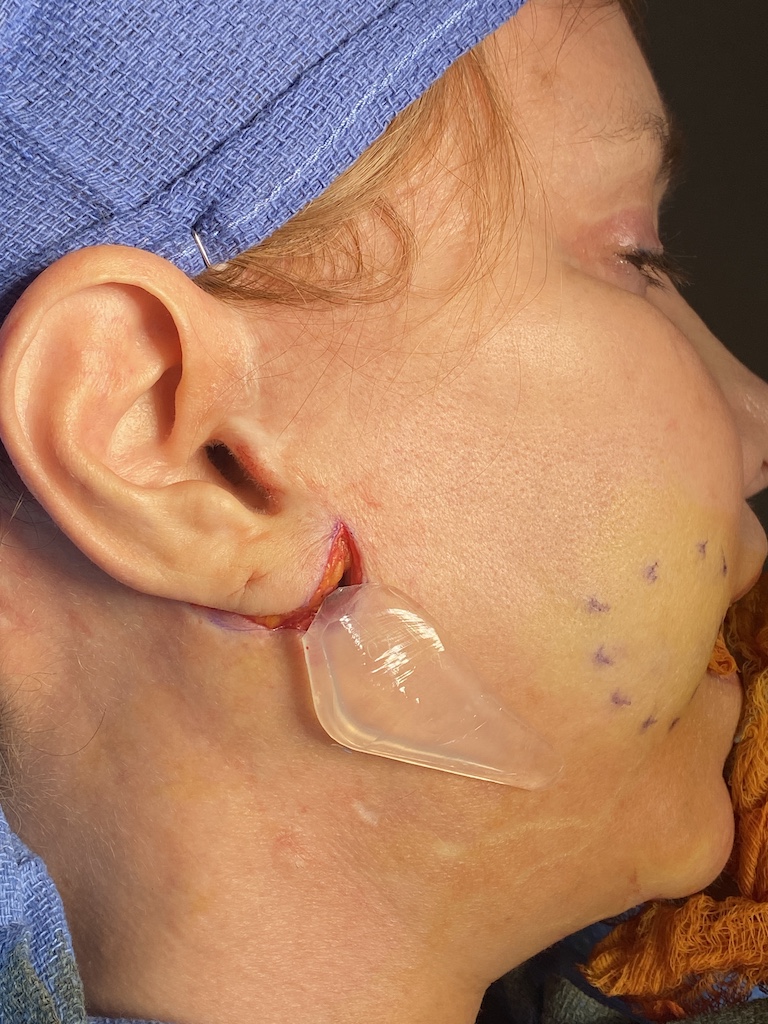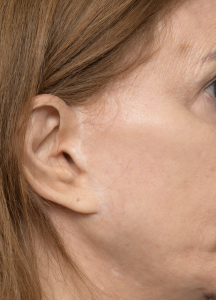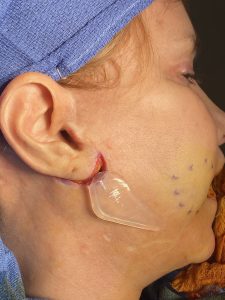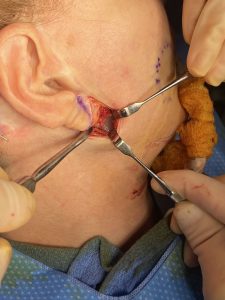Introduction
The external skin approach to placing jaw angle implants is a less commonly used alternative to the more common intraoral approach. Coming from the skin side it provides direct access to the angle of the mandible as well as optimal visualization of the working end of the implant.
Transcutaneous access to the mandibular angle is used when:
- There is existing scar over or near the jaw angles.
- Desire to lower infection risk from a prior implant infection.
- Patient request to avoid intraoral incisions.
- Combined open procedures (e.g., facelift) are being performed concurrently.
- A more direct view and control over implant placement is desired. (secondary repositioning or an implant overlay is being done)

The advantages of the external jaw angle approach are:
- Direct visualization of the mandibular angle and implant pocket.
- Avoids intraoral contamination.
- Useful in revision or secondary cases where implant repositioning is needed.
Case Study
This female had a successful outcome and uncomplicated healing from a prior custom jawline implant which replaced unsatisfactory standard chin and jaw angle implants. She also had a prior facelift which predated her custom jawline implant. The goal and effects of a custom jawline was to soften the strong and and angular jaw augmentation that the standard implants had created.Despite the outstanding result she desired further jaw shape improvements, specifically wider and lower jaw angles that had a round non-angular shape.

Discussion
While not a primary method of access to the jaw angles in facial implant surgery. When indicated it has several advantages which include:
- Better visualization of the implant-bone interface; more accurate implant placement, repositioning, alignment and screw fixation.
- Reduced risk of contamination/infection compared to intraoral access.
- Avoids reopening prior intraoral incisions which may have scar tissue, poor healing, and increased infection risk.
- Scarring may be minimal particularly if pre-existing scars near the jaw angles exist.
In this patient the close proximity of the facelift scar to an existing implant augmentation made the external approach a logical choice. Besides the scar proximity having implants already in place and the implant replacement being an overlay to what was already there made the external approach even more appealing. Given the importance getting the overlay implant down and over the existing implants with certainty requires a direct visualization of its placement which can only be provided by the external approach. Anytime you have one implant placed on top of another one screw fixation is absolutely essential and two screws are needed to reduce the risk of implant rotation.
Key Points
1) The earlobe portion of a facelift scar can be used for secondary jaw angle implant adjustment, replacement, or for an overlay implant for additional augmentation.
2) When in one implant is added on top of another one, known as an overlay concept, long screw fixation is needed that must pass through both implants to the underlying bone.
3) The external approach to the jaw angles does not make for a wider or more open exposure to the area but it does provide direct visual assessment of the implant to bone angle relationship. which is the key to implant augmentation of this area.
Barry Eppley, MD, DMD
World-Renowned Plastic Surgeon






